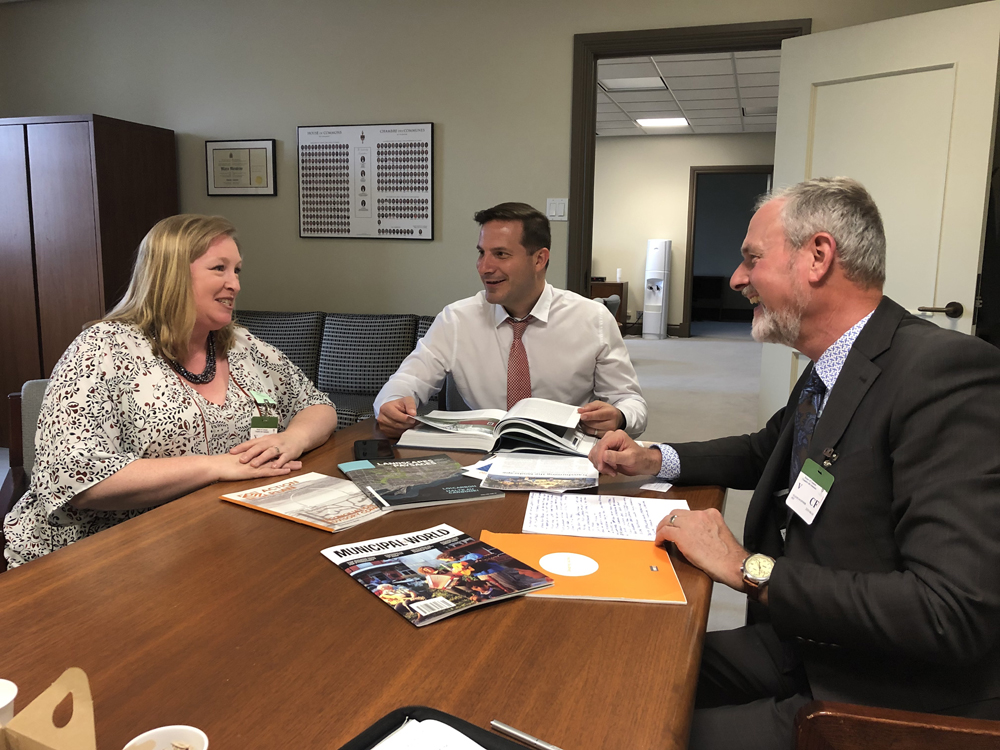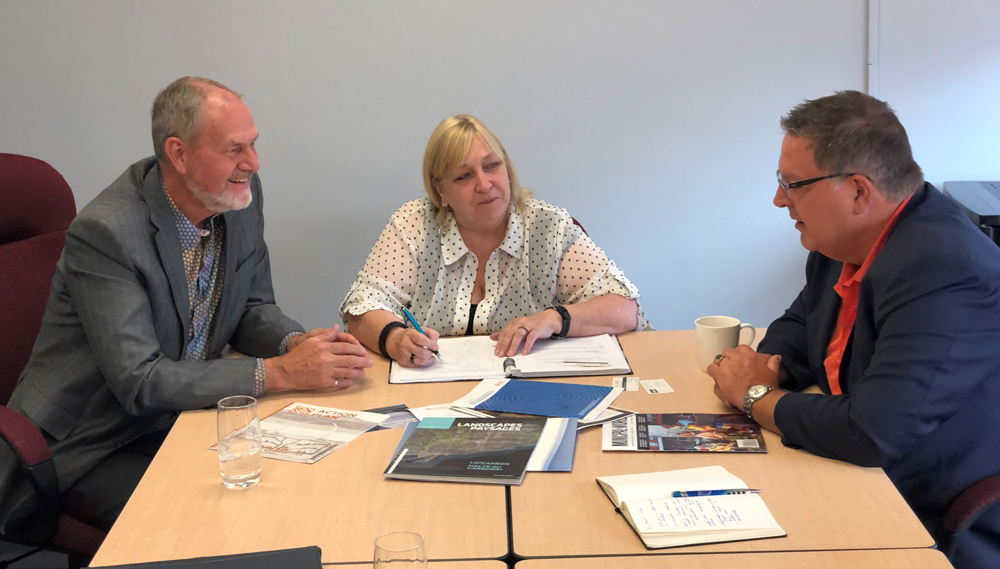Professional Practice: The power to influence public policy
“Public policy changes don’t happen overnight” – Howard Brown
TEXT BY GLENN A. O’CONNOR
In 2012, when I was the OALA President, Council endorsed me asking highly respected member Eha Naylor to assemble and chair a committee of OALA members to pursue a provincial legislation to regulate the practice of landscape architecture. (Eha accepted the challenge and we are all extremely grateful she is still the Chair of the PLC today).
Up to this point in time, OALA Council and senior practitioners had discussed the concept and pursuit of a Practice Act on many occasions. OALA Council agreed it was time to begin the process of preparing background papers and supporting documents that would be required for the future. As the process unfolded over the subsequent seven years, the list of government requirements and background supporting documents grew.
The Practice Legislation Committee (PLC) grew in size and diversity, engaging additional members to fulfill specific required tasks to address issues as they arose.
In the winter of 2017, the PLC provided input to the new OALA Strategic Plan (a 3-year roadmap for the association). The pursuit of a Province of Ontario Landscape Architecture (LA) Practice Act was one of the main goals. The multi-facetted strategy involves: Apprising legislators, policy makers (municipal and provincial), allied professionals and the public on the value of an updated legislation towards a LA practice act in Ontario. The OALA Strategic Plan (with specific actions/timing) provides direction to guide PLC activities and is our framework, moving forward.
In March 2018, prior to the June Ontario election, a meeting was held with Ministry of the Attorney General office to review provincial requirements and next steps. The OALA was advised to further address the ‘risk of harm’ to the public—to undertake a review and update of our current OALA Code of Ethics and Professional Conduct.
OALA legal counsel identified specifics of enhanced Code of Conduct regulations as part of our due diligence, and as suggested by the A.G. office.
To address the government and Attorney General’s questions, two additional subcommittees were formed. These subcommittees are The Risk of Harm Sub-Committee and The OALA Code of Ethics and Standards for Professional Practice Sub-Committee. Currently, these sub-committees are nearing the end of their mandate, which will create integral components to support our Practice Act pursuit. Following the June 2018 Provincial election, the OALA executed a two-pronged approach: One—meet with many of the newly elected MPPs and Ministers to bring visibility to landscape architects.
Two—update the Risk of Harm document, based on feedback from the former Attorney General’s office.
OALA also sought to increase our visibility with the new Attorney General, Caroline Mulroney, and MPPs or representatives. OALA members, together with our government relations consultant Howard Brown of Brown and Cohen Communications and Public Affairs, have been regularly and actively connecting with sitting members and support staff of the legislature on the initiative. OALA shares monthly updates, specifically through the OALA Practice Legislation Progress Post newsletter, which demonstrates the incredible effort of so many volunteers. Over the past number of years, the OALA has learned many lessons and made valuable progress on the Practice Act, as well as raising the profile of the profession.
What have we learned so far?
Repeated lobbying and meetings build support, but it takes time to achieve our goals. We also have to keep in mind that government priorities change. The OALA (and landscape architects in general) have a compelling story to tell, and we can use that story to build up the profile of the profession.
The Big Picture – How is this going?
Our volunteer members have been steadily raising the profile of OALA and the profession through numerous meetings, discussions, events, communications/ publications, and sharing news of members’ awards and successes. All of which is increasing the municipal and provincial profile for members.
At a national level, the CSLA is building upon the success of the OALA and the many lessons learned with the PLC. In May 2019, at the CSLA Board of directors meeting held in Vancouver, I proposed a campaign to raise the profile of the profession in Canada called the L.A.W. Campaign (Land, Air, Water).
A 60-day pilot project was approved by the Board, which commenced in May 2019, and which we hope will be the start of a multi-year strategy. To help achieve this goal, we retained Brown and Cohen Communications and Public Affairs. They organized meetings with CSLA members and MPs (targeted elected officials) in Ottawa on June 10th and 11th, 2019, while Parliament was still sitting until June 21. Brown and Cohen arranged meetings with key MPs from across Canada. During these meetings, CSLA had the opportunity to test positioning and messaging with the MPs. The CSLA have developed excellent papers on climate change and adaptation, as well as reconciliation. As stewards of the land, our profession is ideally suited to help MPs with a clear position as we approach the fall 2019 Federal election.

Following these meetings, CSLA developed branding and consistent messaging for a social media campaign. Using consistent messaging, CSLA reached out to MPs and senior government officials during the summer and fall of 2019, contacting key MPs and Ministers.
This was an excellent opportunity to reach out and directly engage our members, with a specific focus, and a challenge for students, associates and younger members who are all social media experts and well connected. The campaign, with targeted messages, was prepared for CSLA members’ use, and is an excellent opportunity to directly engage members, MPs, and even MPPs.
To further demonstrate the power to influence policy, let’s look at a specific example of a success story. OALA Government Relations Consultant Howard Brown has worked on public policy initiatives for several decades and has helped to significantly influence public policy.

“It is amazing how a simple idea can come to fruition and change lives,” said Brown. “It took us years to get it done but it made a huge difference in people’s lives!”
Two pieces of legislation that Brown helped initiate were the Canada Education Savings Grant in 1998 and the Canada Learning Bond in 2006.
Working with the Registered Education Savings Plan Dealers Association of Canada (RESPDAC), the changes grew parental savings for post-secondary education in Canada ten-fold over a ten-year period.
Savings went from $2 billion to $20 billion from 1998.
It made Canada, as of 2018, the most educated country in the world, with the highest percentage of post-secondary grads of any country on planet.
This is an excellent example of how an idea can be transformed into a major policy change that can positively influence the lives of many for years to come. In this case, the influence was felt nationally.
As landscape architects and members of the public, we do have the power to influence Public Policy changes, but they don’t happen overnight.
BIO/ GLENN A. O’CONNOR, OALA, FCSLA, IS A MEMBER OF THE PLC, PRESIDENT OF THE CSLA AND IS A PAST OALA PRESIDENT.
